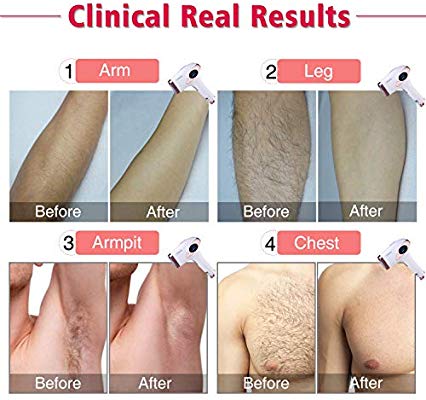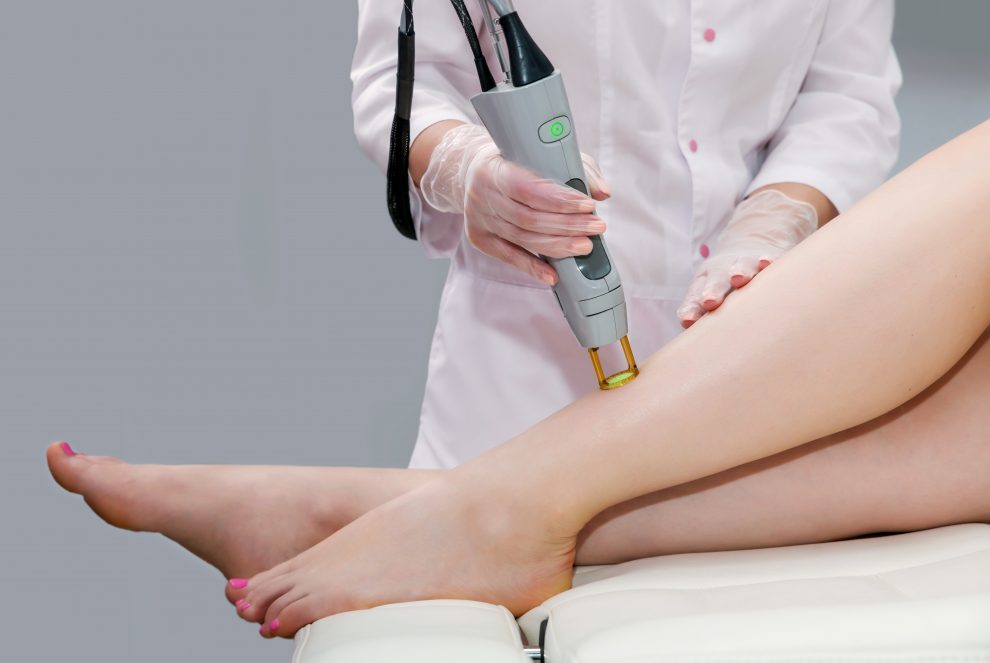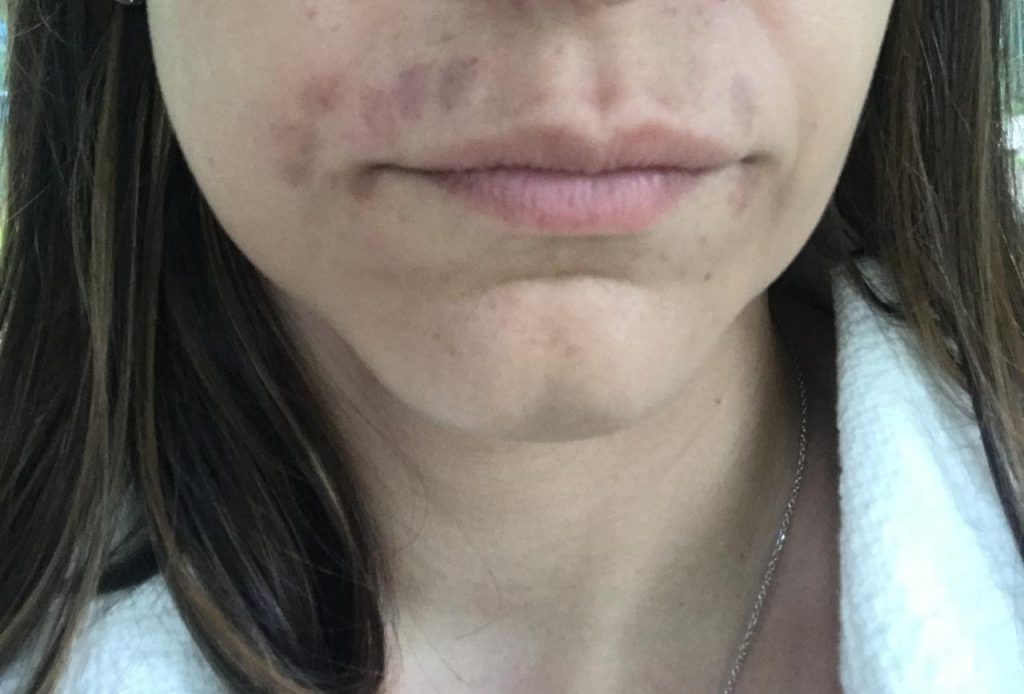Everything about laser hair removal.
In this review, we want to get all the data about the laser hair removal process.
We plan to show parameters that have to be followed once you plan to buy or make your own hair removal laser machine.
Later on, we plan to make research and explore if current parameters are causing no hazard or danger to your body.

A Q-switched Nd:YAG laser (Thermolase Corp) was used at a fluence of 2.6 j/cm^2, a wavelength of 1064 nm, a pulse duration of 50 nanoseconds, a 7-mm spot size, and a pulse repetition rate of 10 Hz.[1]
Simultaneously, the upper pigmented layer of the skin, i.e., the epidermis, must be protected to avoid scarring and dyspigmentation. Epidermal preservation has been accomplished with several cooling techniques, such as contact cooling, cryogen spray cooling and cooling by forced airflow. The optimal cooling technique is dependent on laser pulse duration, as efficient cooling must be done immediately before laser exposure (precooling) for laser pulses shorter than about 10 ms, whereas cooling during laser exposure (parallel cooling) might be necessary for longer pulses. Finally, quenching of the temperature rise by cooling immediately after laser exposure is also of value (postcooling)[2]
A variety of different lasers have been used for this purpose, ranging from ruby lasers (Cr:Al 2 O 3) at a wavelength of 694 nm, alexandrite lasers (Cr:BeAl 2 O 4) at 755 nm, gallium–aluminum–arsenide (GaAlAs) diode lasers around 800 nm to Nd:yttrium–aluminum–garnet (YAG) lasers (Nd:Y 3 Al 5 O 12) at 1064 nm. The pulse duration is usually dependent on the specific laser system, and pulses of 1–100 ms are typically used in the clinic.
The fluence rate at 694, 755 and 800 nm wavelengths is equal to the radiant exposure at depths up to about 2 mm, whereas at 1064 nm this depth increases to 3 mm. However, it should be noted that these depths are dependent on parameters such as scattering, melanin- and blood content, which might vary significantly on an individual patient basis as well as from site to site on the same patient.
Contact cooling of human skin is achieved by heat conduction into an adjacent precooled solid body, usually an optically transparent plate, kept at constant temperature (−10 to +4°C) by a cooling system. Laser exposure is delivered through the plate, which is pressed against the patient’s skin. Contact cooling can be very efficient especially when a highly conductive material, such as sapphire, is used for the cooling plate. However, in practice, the thermal resistance at the interface of the intervening layer between the skin and plate inevitably impairs the rate of heat extraction with contact cooling. Air, bubbles, hair or other substances may impede the direct contact between the skin surface and cooling plate. Human skin can also be cooled by precooled air blown onto or across the surface at temperatures as low as −30°C. Despite the low air temperature used, air cooling is characterized by the lowest cooling rate since the heat transfer coefficient is very low. As a result, long cooling times (on the order of several seconds) are necessary to induce significant temperature reductions in the basal layer. Therefore, the final outcome is inevitably general (“bulk”) cooling of the entire skin with minimal spatial selectivity.
Rapid and spatially selective epidermal cooling can be achieved by cryogen spray cooling (also referred to as dynamic cooling). Tetrafluoroethane (R-134a), which has a boiling point of −26°C at atmospheric pressure, is the only cryogenic compound currently approved by the Food and Drug Administration for use in dermatologic laser surgery. This cryogen is a nonflammable, nontoxic, and nonchlorinated (C 2 H 2 F 4) environmentally compatible Freon substitute. Liquid cryogen is “atomized” into a fine spray and directed toward the skin
The present analysis shows that penetration of laser light in human skin is almost the same for lasers at 694, 755, and 800 nm, whereas light penetrates somewhat deeper for Nd:YAG lasers at 1064 nm. The required radiant exposure is, due to reduced melanin absorption in the near infrared, significantly larger for 1064 nm. However, since the target chromophore of the hair follicle, i.e., melanin, is the same as the competing chromophore in the epidermis, the probability for epidermal damage is expected to be about the same for all wavelengths under study.
Moreover, the analysis indicates that the efficacy of introducing damage to hair follicles in human skin is almost independent on laser pulse duration in the 0.3–100 ms region. The most important factor to ensure epidermal protection is to optimize skin cooling.
For laser pulses less than 10 ms, precooling with cryogen spray is the only efficient technique. In the case of 30–100 ms laser pulses, precooling of the skin by contact cooling for 0.5–1 s can provide adequate protection.16 Precooling can also be performed by forced cooled air, but the cooling time must be on the order of 10–20 s, which results in an increased cooling depth down to 1.5 mm. However, this might be acceptable in the case of deep targets such as hair follicles.
For 30–100 ms laser pulses, parallel cooling can be very efficient. Parallel cooling can be performed with continuous or intermittent cryogen spray during the laser pulse, by irradiating through a block of ice, or by bringing a chilled optically transparent window with high thermal conductivity, such as a sapphire plate, into good thermal contact with the skin. Passive cooling by depositing a thick layer of aqueous gel on the skin surface during laser exposure can also be of some value.
Finally, in the case of postcooling, which shortens the time that the epidermis remains at elevated temperatures, cryogen spray cooling is by far the most efficient. Here, a single short cryogen spurt of about 20 ms duration is sufficient to reduce the laser-induced epidermal temperature rise down to ambient values.
According to skin types II and III, with dark brown or black hair, were treated with a diode laser (800 nm, 10–40 J/cm^2, 5–30 msec, 9 mm 9 mm, 5°C chilled sapphire tip handpiece)
at varying fluences and pulse durations, as well as a varying number of treatments and pulses.[3]
The exposures were performed with an 800 nm diode laser prototype with 9 mm spot size and a sapphire window maintained at room temperature. The fluence was kept constant at 35 J/cm^2 for all exposures. The pulsewidth was 30, 100, 200, 350, 400, and 500 ms equivalent to an irradiance of 1170, 350,175,100, 90, and 70 W/cm^2 .[4]
After ex vivo (single pulse, 810 nm, 1.7–26.4 J/cm2, 4–64 ms pulse) Fluences below 13.2 J/cm^2 provoked catagen‐like transition, higher fluences resulted in coagulation in HF compartments.[5]
On results of 30 female patients with hypertrichosis in the facial area treated with the long pulse alexandrite laser at 20 msec (Cynosure PhotoGenica LPIR/Apogee; 755 nm; 20 ms; up to 30 J/cm^2; 10 or 12.5 mm beam diameter) over an 18 month treatment period. After an average of 8 treatments, an average clearance rate of 75% could be achieved. Fair hair (white/blond/red) only showed a clearance rate of 10%. Hypo- and hyperpigmentation did not appear.[6]
Normal-mode ruby laser pulses (694 nm, 270 microseconds, 6 mm beam diameter[7]
Pulsed ruby laser (694 nm, 3ms pulsewidth, 7 – 10-mm spot size) in removing unwanted hair, and to provide treatment guidelines for the proper utilization of this laser system. Forty-eight areas of unwanted facial and body hair from 25 patients with blonde, brown, or black hair were treated with the long-pulsed ruby laser at fluences between 10 and 40 J/cm^2.[8]
A long‐pulsed ruby laser 694 nm, 5‐msec pulse length, 6 mm spot size, 17.5–32 J/cm^2[9]
2 ms free running pulsed Alexandrite 755 nm laser operated at a repetition rate of up to 5 pps at energy fluences of 25-40 J/cm^2 to treat a wide range of body sites on 126 patients[10]
Possible skin damage...[1] Optimizing Treatment Parameters for Hair Removal Using a Topical Carbon-Based Solution and l064-nm Q-Switched Neodymium:YAG_Laser Energy Christopher A. Nanni, MD; Tina S. Alster, MD [2] On the physics of laser-induced selective photothermolysis of hair follicles: Influence of wavelength, pulse duration, and epidermal cooling Lars Othar Svaasand; John Stuart Nelson M.D. [3] Prospective Study of Hair Reduction by Diode Laser (800 nm) with Long‐Term Follow‐Up Wendy W. Lou MD / Adelle T. Quintana MD [4] Extended Theory of Selective Photothermolysis G.B. Altshuler, PhD, 1 * R.R. Anderson, MD, 2 D. Manstein, MD, 2 H.H. Zenzie, MS, 1 and M.Z. Smirnov, PhD3 1 Palomar Medical Technologies, Inc., Burlington, Massachusetts 01803 2 Massachusetts General Hospital, Wellman Laboratories of Photomedicine, Boston, Massachusetts 02114 3 Institute of Fine Mechanics and Optics, St. Petersburg, Russia 197101 [5] Dose‐response of human follicles during laser‐based hair removal: Ex vivo photoepilation model with classification system embracing morphological and histological features Marijke A. A. van Vlimmeren PhD, Bianca Raafs BSc , Gillian Westgate PhD, Linda G. M. Beijens MSc, Natallia E. Uzunbajakava PhD [6] Temporary hair loss using the long-pulsed alexandrite laser at 20 milliseconds. Raulin C1, Greve B. [7] Damage to hair follicles by normal-mode ruby laser pulses. Grossman MC1, Dierickx C, Farinelli W, Flotte T, Anderson RR. [8] A clinical study of hair removal using the long-pulsed ruby laser. Williams R1, Havoonjian H, Isagholian K, Menaker G, Moy R. [9] Hair Removal Using a 5‐msec Long‐Pulsed Ruby Laser Monika Beatrix Wimmershoff MD, Kathrin Scherer, Susanne Lorenz, Michael Landthaler MD, Ulrich Hohenleutner MD [10] Pulsed alexandrite laser technology for noninvasive hair removal. Finkel B1, Eliezri YD, Waldman A, Slatkine M.

